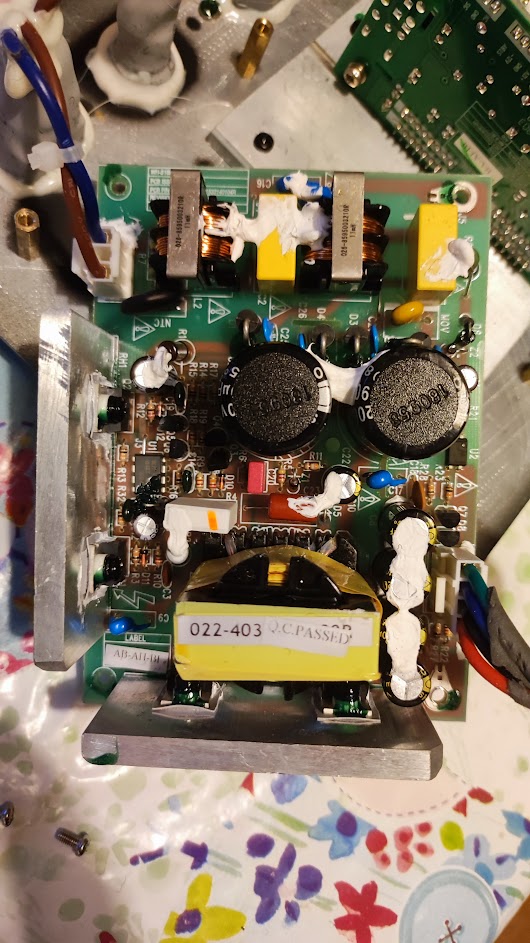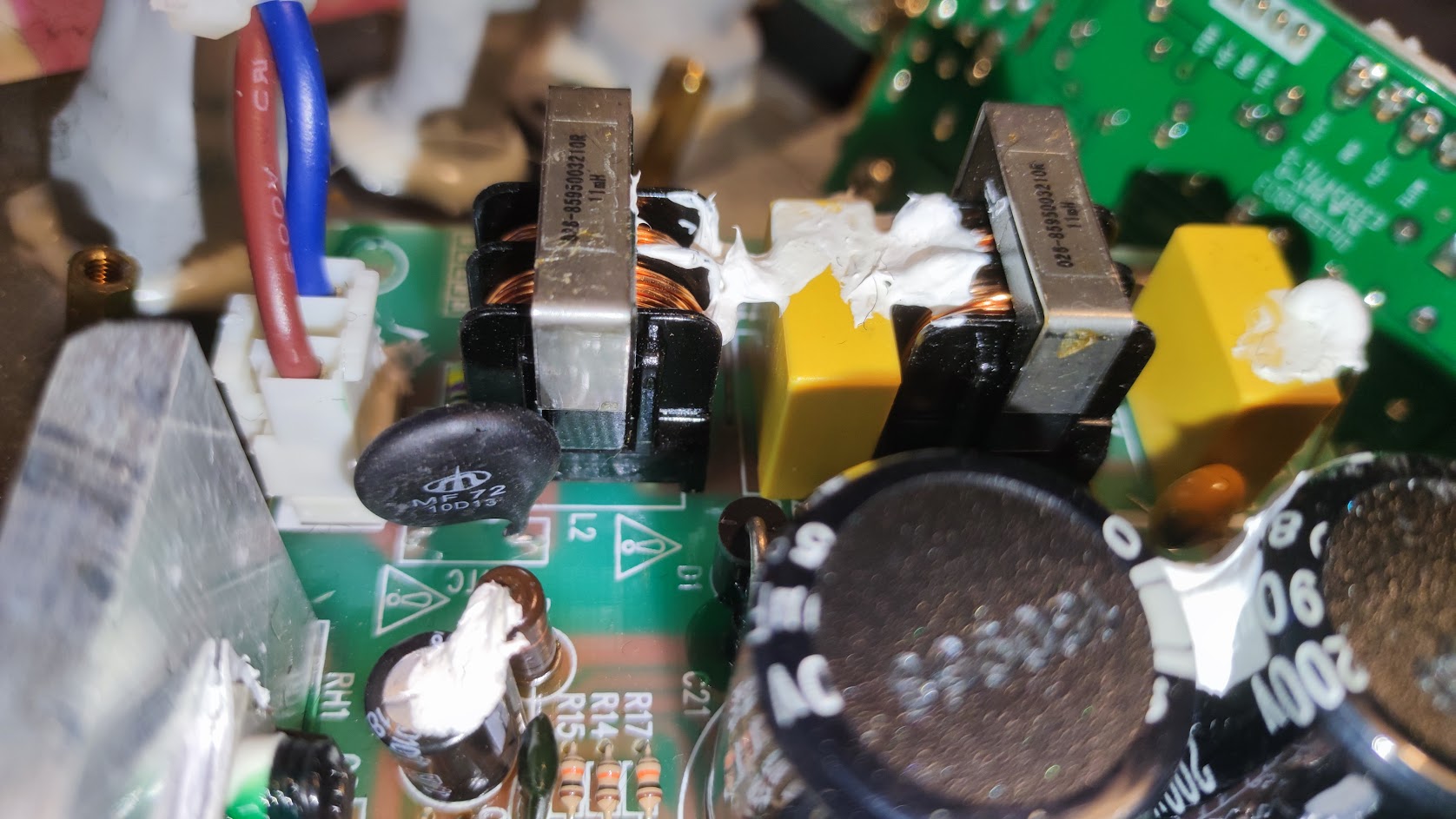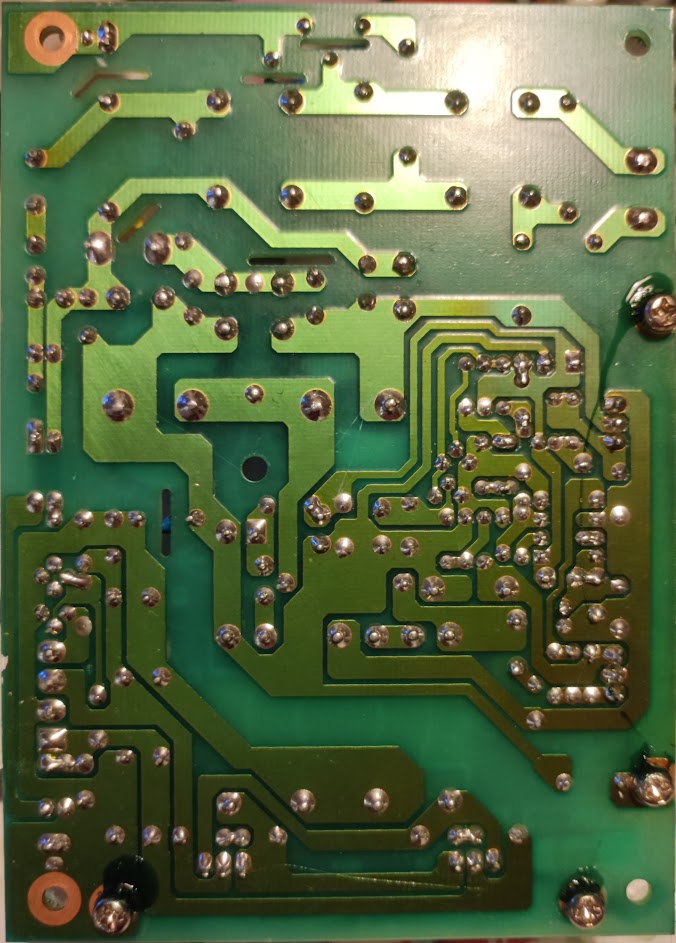The initial debugging you did, how did you root cause to the PSU? Your debugging aside I would check the fuse and MOV first. Did you have any bad weather recently? Lightning will take out your fuse and MOV and they're an easy fix. Google what a Metal Oxide Varistor looks like. Next I would check for any damaged or blackened parts, then check the capacitors for bulging and capacitence values. Anything after that will get heavy on the EE side of things.
Ask Electronics
For questions about component-level electronic circuits, tools and equipment.
Rules
1: Be nice.
2: Be on-topic (eg: Electronic, not electrical).
3: No commercial stuff, buying, selling or valuations.
4: Be safe.
I am guessing the MOV is the component marked MOV on the board, its markings are: TVR 07471. Can I test this "in-circuit, or must I de-solder it to test it?
In-Circuit I measure around 470kohm
Thank you for taking the time to help out :-)
I have attached a couple of images. I figured the PSU is the issue, since there is 0v between the black lead and the other leads on the connector to the other parts - the one in the bottom right corner on the attached overhead.
I measured the "MF 72 10D13" for connection, and it is OK. I then measured the two large capacitors (in-circuit) and they both come out fairly close to the 390uF they are rated as. I also tried to measure what I think are 4 transistors attached to the heatsinks. But am uncertain of the results there, as I can't follow enough of the circuit to understand the results - and I am not even sure they are transistors - much less if they are npn or pnp :-) They are marked as Q1, Q2, D6 and D7 on the board.
When visually inspecting the board and components, the only thing I thought, might be "odd" was the "browning/darkening" around the circuitry near where "R1" is located.
Wow OK, great pictures. First I will say the PCB and components look super clean and the design, components and overall design looks very high quality. I'm kind of surprised this isn't working because it doesn't appear to be low quality, quite the opposite. The board is also super clean and well care for. I didn't expect all the PCBs to be broken out, there appears to be a dedicated PSU board and I assume an amplifier board separate. Usually everything is all on one board. Perhaps you can order a new PSU from a different vendor if you figure out what voltages it should output, is there any clear marking on the output where there is no voltages to tell you what should be there?
OK so you tested the MOV and its 470kohm that is GOOD. It should be high resistance unless its damaged and then it typically fails as an electrical short. Also you would see physical damage and blackening. Next thing I would check is the fuse, but your PSU is fancy and uses an NTC. It will be low resistance until too much current flows which heats it up and then it's resistance climbs higher and higher to choke the current flow to a safe/manageable level. You should check that and make sure its resistance is low, less than 20ohms or so. Capacitors also look good and you tested them. Unfortunately for you, this might be a vexxing or random failure :(
Did you happen to call the company and ask for help or a repair program? It looks high enough quality that they might stand behind it and mail you a new PCB.
Thanks again for looking at this!
The NTC meassures very low ohm, in circuit it's around 14 ohm.
The markings on the "receiver" board are: +27v, gnd, -27v and "mute".
I would like to try to do some "divide and conquer" debugging, as the total number of components is rather low. I would like to try to eliminate the different "blocks". Like I can connect it up, and measure the voltage after certain "stages". Maybe after the inrush current limiter? To my very limited understanding that should be right at the end of the AC block/stage? Maybe dividing the board into 3 or 4 stages like this I could start to narrow down the issue?
You could try that yeah, start at the AC input and work your wayt to the DC output to and find out where the circuit fails. If you want to do that though I'd recommend that you take 2 good pictures of the front and the back, put them side to side and sketch out the circuit diagram. It's no use trying to measure voltage nodes if you don't know what they are supposed to be. Question is if that is worth your time, there is certainly some educational value but there is always a chance that you just won't find the fault.
If you do make a schematic then react to my post. I'll try to help you with reading the circuit if you want.


